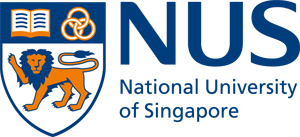
The vision of the BEE Hub cluster is to establish a Building Energy Efficiency Hub@NUS leveraging the campus as a “living lab” / showcase.
An initial phase involves 10 buildings on campus with the following objectives:
Develop an Energy Information Network (EIN) Infrastructure. The EIN will improve current energy efficiency efforts on campus through an intelligent building system that provides centralized operations to monitor, control and manage energy use while enhancing the quality of the built environment on the campus.
Create a Centre of Excellence for Building Energy Efficiency Solutions through technology development, analytics, control and management.
The BEE Hub is proposed to include a wider scope aimed at addressing energy efficiency enhancements to more buildings on campus and also lead to cutting edge research in energy efficiency in different types of buildings, such as, laboratories, data centres, class rooms, libraries and offices. This is to be achieved with significant improvement to building performance and is aimed for both existing and new buildings in the Tropics. This is envisaged to be developed through a novel 6-pronged strategic thrust, called the HIMARK:
Human-Technology-Interface
This involves the human requirements in the indoor environment, broadly classified as Indoor Environmental Quality (IEQ). The huge energy demand due to air-conditioning in the Tropics leads to research opportunities in Thermal comfort and Indoor Air Quality in the context of Energy Efficient Healthy Buildings. This integrated IEQ and Energy research contributes to relevant Standards and Guidelines in the Tropical belt that are used locally and regionally, placing Singapore in leadership role in High Performing Buildings on a global scale.
Innovative Technological Development and Deployment
This involves the technological innovations in Façade system, Air-Conditioning and Mechanical Ventilation (ACMV) system, Building Automation System (BAS) and Intelligent Buildings/Smart Buildings that apply to modern offices with the aim of achieving high Energy Efficiency with improved IEQ.
Measurement & Verification
This involves the use of hardware sensors and software techniques to establish an optimal M & V protocol and strategy to better estimate the energy usage in an existing building pre and post retrofits. This is an important and necessary component of the BEEHub @ NUS.
Analytics of Energy and Environment
This involves timely analysis of the vast Energy, Environment and other related data that will be generated, which is crucial for optimizing energy and building performance and in the implementation of appropriate technologies and strategies.
Resilience of Energy and Environment
One of Singapore’s strategic policies towards energy security is to build energy resilience among our developments. This programme is to integrate building energy efficiency and integrated control systems with energy resilience principles. Singapore has a stockpile of energy for one year. The principles of energy resilience is to ensure that in the event of termination of supplies, this stockpile can last as long as possible with proper strategies and controllable consumption strategies. This same principles and strategies can be applied to countries and cities that are prone to natural disasters. The resilience strategies will help them cope with disaster recovery in a fast and organized manner. Environment-related resilience is also an integral component of this programme and includes Singapore’s preparedness in the event of haze and other airborne hazards.
Knowledge Management and Education
This involves cross-cutting research dealing with the management and of knowledge generated from the other 5 components of HIMARK and in offering educational programmes at all levels in NUS, including professional development programmes.